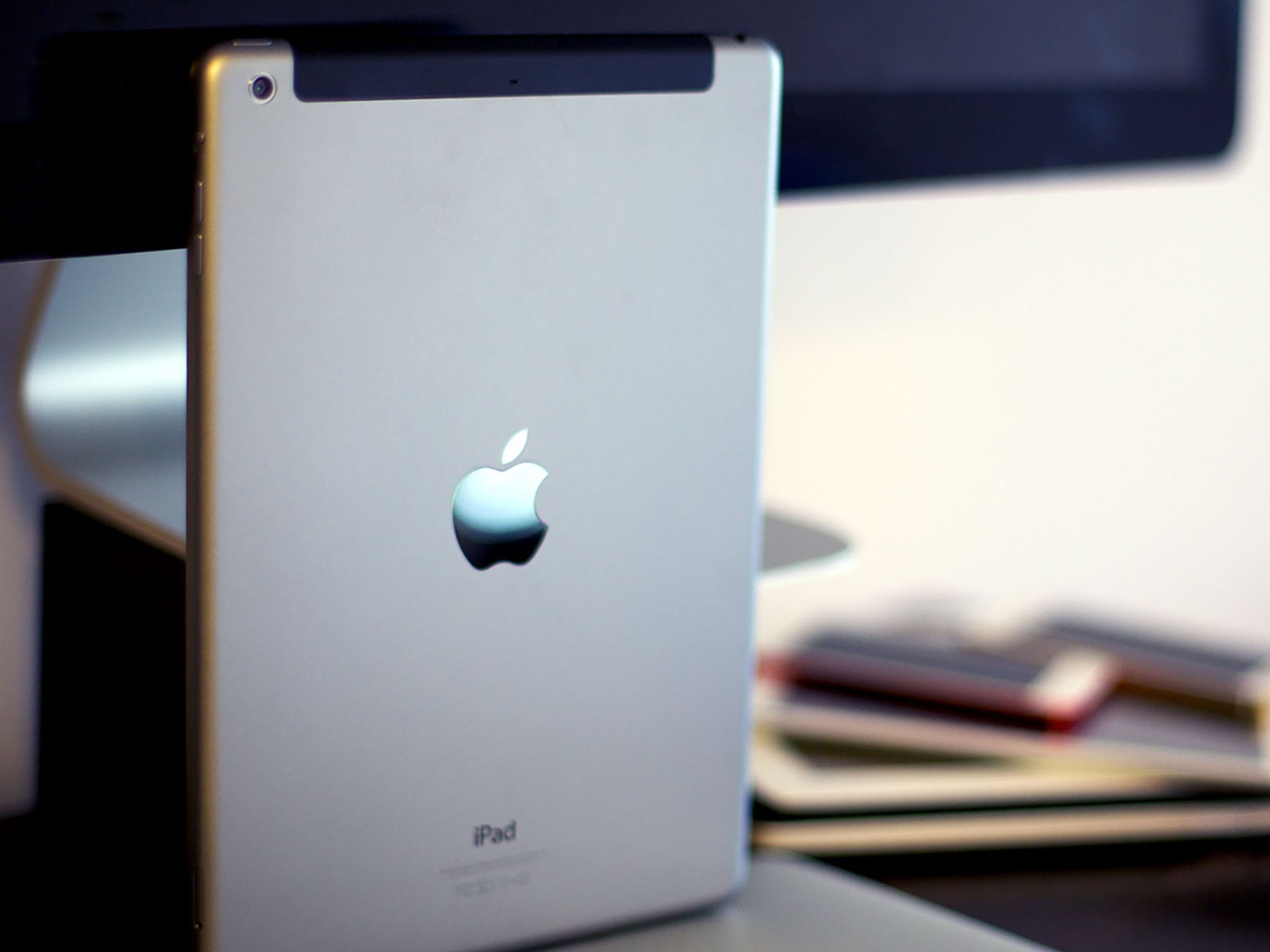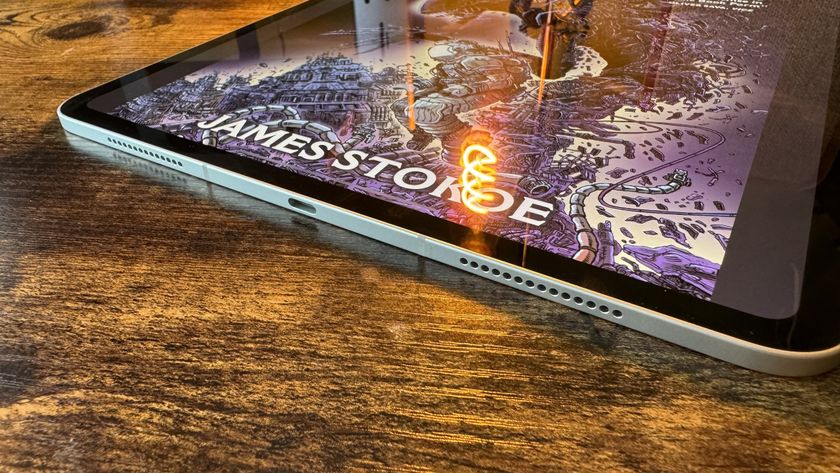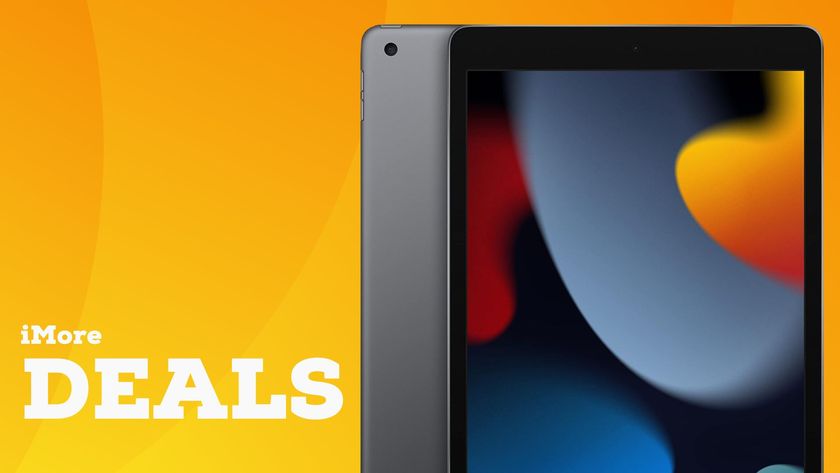Could the iPad replace the Cintiq on illustrators' desks?

Some graphic designers, digital illustrators, artists and others use expensive, specialized graphics pads like Wacom's Cintiq, which integrate a flat panel display into a digitized tablet surface suitable for use with a specialized stylus. With Apple's focus on continuity between iOS 8 and OS X Yosemite, I've begun to wonder if the iPad may make a suitable, less expensive replacement.
What got me thinking about this the other day was a discussion with my daughter. She's a gift artist, fond of drawing cartoon characters in the "chibi" style of Japanese anime and manga for herself and her friends. She uses the iPad exclusively as her input device. She also has a less expensive Wacom tablet, without a built-in screen.
She uses the iPad almost exclusively. When I asked her why she doesn't use the Wacom tablet more, she told me that it doesn't "flow" as easily for her when she has to keep her eye on the screen — a vertical surface — but draw using her hand on a separate horizontal surface. She hasn't had any professional or academic training using the tablet. As an intuitive artist, the iPad simply makes a lot more sense for her.
I asked her, "Would you like it if you could tether to your iPad to the screen, and use that as an input device?" Her response was an emphatic yes. She told me that she thought it would be a lot more natural as an input method.
You got your chocolate in my peanut butter
Already, artists and other use the iPad to create beautiful visual art, illustration and design. And thanks to a wealth of apps that tap into this creative well, there's no shortage of ways to get your artwork from your iPad onto your Mac. But using your iPad as an extension of your Mac — as an actual input device — isn't yet on the table.
Wacom cornered the market on touchscreen tablets years ago with the Cintiq brand. The devices connect to your Mac using a combination of HDMI, DisplayPort or DVI-I (for the video signal, depending on the model) and USB (for the input signal). What happens when you connect them, and install the accompanying software, is rather spectacular: You add to your Mac an integrated digital easel. A color display that you can work on as intuitively as if it were a blank canvas or piece of paper in front of you.
Cintiq displays are not cheap - $999 gets you the 13-inch model. Step it up to 22 inches and be prepared to fork over $2,499, or $2,999 for a 24-inch version. But these are incredibly specialized devices designed to appeal to a relatively small niche of professionals who truly need this sort of capability.
Master your iPhone in minutes
iMore offers spot-on advice and guidance from our team of experts, with decades of Apple device experience to lean on. Learn more with iMore!
The funny thing about Cintiq tablets is how much of that work is already being done on the iPad. So why not make the iPad work more like the Cintiq, and expand the arsenal of artist's tools on the Mac?
Too cramped?
Obviously the 9.7-inch diagonal dimensions of an iPad Air might make for a small workspace for the average illustrator. But I see iPads get used all the time to create beautiful works by artists, illustrators and designers, so I don't think it would be that much of a detriment to use as a Mac input device.
Of course, if Apple were to ever introduce a larger iPad, like a hypothesized iPad Pro, that'd be a delightful option too. But so far that remains a pipe dream.
What's more, I don't foresee a future in which Apple makes the MacBook Air or the MacBook Pro into a "two in one" like the Surface Pro or the burgeoning field of tablet-cum-laptops emerging in the Windows space. It's a problem in search of a solution.
Why bother?
It's already pretty easy to create content on the iPad and move it back to the Mac, and it's going to get easier with iOS 8 still, once iCloud Drive is live. So what's the advantage of trying to use the iPad as an actual Mac input device?
Seamless workflow would be one benefit. Instead of having to worry about data transfer between devices and cloud use, working locally on the Mac using the iPad as an input device would be an obvious benefit. Another would be the ability to use Mac-native tools on the Mac itself, rather than relying on iOS-specific software.
Plus there's the utility of the iPad itself. People wouldn't invest a thousand dollars or three into a specialized input device, they'd instead be buying a general purpose tablet that does a million things besides, but also acts as an input device for the Mac.
Your thoughts
I don't we're that far away from putting the disparate pieces pieces together here: iOS 8, Yosemite and Continuity make it clear that Apple sees a lot of sense in blurring the lines between operating systems and devices, instead making the work you're doing with those devices the most important thing. This seems like a step in that direction.
I admit that my sample size of one doesn't make for the most scientific study of this, so I'm curious about what you think. Are you an artist or illustrator using a Cintiq display, or do you look at them with envy? Can you envision using your iPad as a direct image input device for your Mac?



